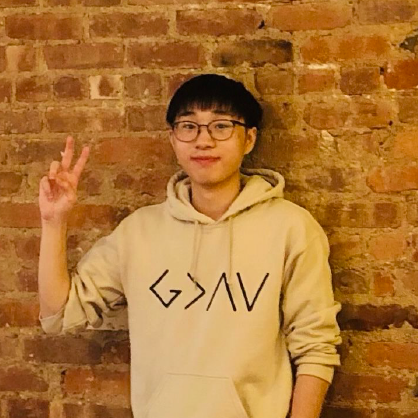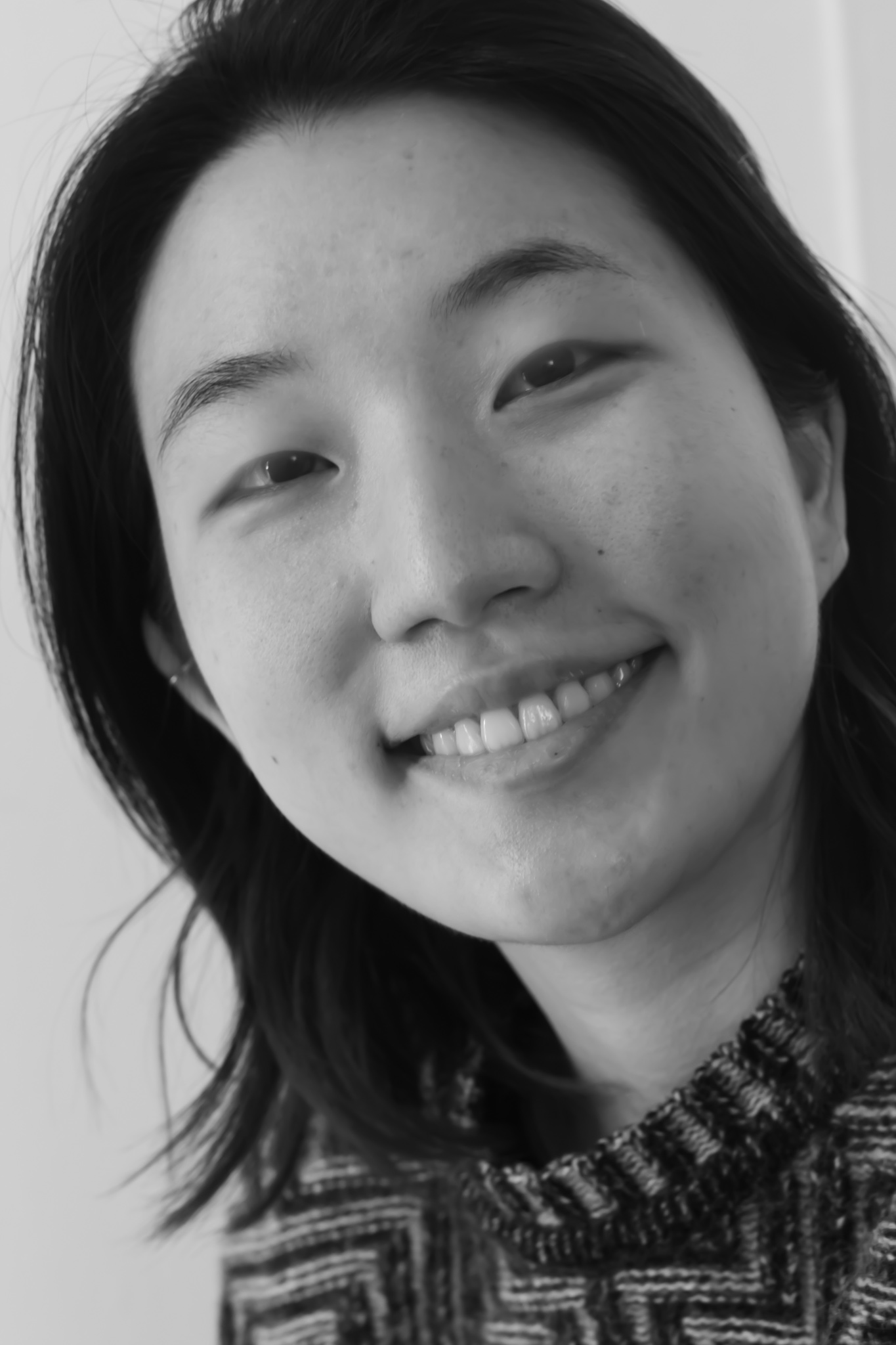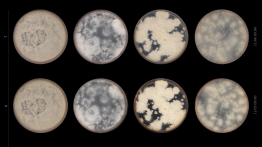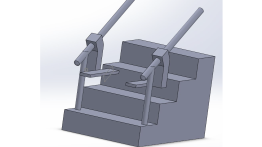Meet the 2021-2022 IDC Foundation Innovation Fellows
POSTED ON: February 21, 2022
Last summer, four exceptional Cooper Union students were selected as recipients of the 2021–2022 IDC Foundation Innovation Fellowship, a new program that supports aspiring architects and engineers to advance their skills through innovative, interdisciplinary, and socially relevant work. Unique among fellowship and scholarship opportunities at Cooper, this merit-based award covers tuition expenses in the students’ final year of study as they work toward the completion of an Innovation Project, preparing them to enter their profession with valuable research experience at the intersections of engineering, architecture, and building technologies.
Encouraging this kind of interdisciplinary student work has been central to The Cooper Union’s partnership with the IDC Foundation, a New York-based charitable organization that promotes innovation in design, engineering, and construction with an emphasis on interaction among those fields to address pressing societal needs. In addition to funding the Innovation Fellowship, the IDC Foundation’s generous support for Cooper has included scholarship awards, student travel grants, and $2 million in funding for the launch of the IDC Foundation Art, Architecture, Construction, and Engineering (AACE) Lab, which opened last year to students from all disciplines.
This year’s four IDC Innovation Fellows have been making strides in developing their Innovation Projects, which include a range of capstone work, research, and senior theses that capture the students’ unique visions for exploring and applying interdisciplinary approaches to important societal, environmental, economic, political, and technological challenges. We checked in to see how their work is developing now that the final semester of their undergraduate education is underway.

Annabella Chen, a fifth-year student in The Irwin S. Chanin School of Architecture, is researching tidal cycles and naval navigation infrastructures for her project. Understanding the nature and materiality of water—its constant flux and flow—and its relationship to astronomical and meteorological processes is fundamental to the project’s approach to exploring new ways of living in the face of sea-level rise and increased flood risks resulting from climate change.
“Rather than attempting to stop a force as persistent as water, my thesis proposes a network of spaces that lives with water, contending with the realities of inhabiting, building, and communicating in a landscape that frequently oscillates between terrestrial and aqueous,” Annabella explains. “Building a hybrid between a model and a laboratory counter, I’ve been using this surface as a site for material and formal explorations of tidal landscapes, naval exploration, and their underlying infrastructures. In thinking about tides as a phenomenon that bridges between sky and soil, tidal architectures can help collapse the spatial and temporal scales of natural processes, creating a more intimate understanding of our environment that goes beyond the abstraction of climate data.”
Working on this project as an Innovation Fellow has been especially beneficial in preparing to enter the professional world, says Annabella: “It’s allowed me greater freedom to develop my own interests and languages of design and, most importantly, greater freedom to engage with the world outside of myself. Especially in fields like architecture, which are entrenched in physical modeling, drawing, and general creative explorations, fellowships give a unique opportunity to experiment, build, and think for a future that is yet to come.”
 Kevin Dai, a mechanical engineering senior in the Albert Nerken School of Engineering, has been collaborating on an energy-efficient building design for affordable housing as part of The Cooper Union’s Solar Decathlon team, which competes each year in the Department of Energy’s national design challenge. Kevin’s role within this interdisciplinary team is to develop the building’s mechanical design to be energy-efficient, affordable, and well-integrated with the rest of the building. Specifically, his project focuses on providing basic utilities by way of passive energy conservation and efficient HVAC equipment, including variable refrigerant flow (VRF) heat pumps and heat recovery ventilators.
Kevin Dai, a mechanical engineering senior in the Albert Nerken School of Engineering, has been collaborating on an energy-efficient building design for affordable housing as part of The Cooper Union’s Solar Decathlon team, which competes each year in the Department of Energy’s national design challenge. Kevin’s role within this interdisciplinary team is to develop the building’s mechanical design to be energy-efficient, affordable, and well-integrated with the rest of the building. Specifically, his project focuses on providing basic utilities by way of passive energy conservation and efficient HVAC equipment, including variable refrigerant flow (VRF) heat pumps and heat recovery ventilators.
The Cooper team’s design for this year’s challenge centers on a specific site in New York City: the Freedom Village Project on 270 East 2nd Street, which is currently being developed by JCJ Architecture and Barrier Free Living to provide affordable housing for survivors of domestic violence with disabilities. Through a partnership with these organizations, Cooper students are creating an alternative zero-energy design for the building. For his part, Kevin’s work develops innovative uses of building science, optimized HVAC systems, and building information modeling software to propose implementations and evaluate the efficiency of the systems while following the site’s real-world building codes and standards. The team recently advanced as one of 10 finalists in the Solar Decathlon's Multifamily Buildings Division and will be competing at the National Renewable Energy Laboratory (NREL) in Colorado this April.
“In my career, I hope to be a mechanical engineer at an engineering firm that holds sustainability and social justice as important values,” says Kevin, who plans on continuing his Cooper education next year in pursuit of a master’s degree in mechanical engineering. “After Cooper, I hope to continue fostering the friendships I've made, serve more in my local church, and volunteer at homeless outreach centers like the Bowery Mission.”
 Raphael Kepecs, also a mechanical engineering senior, is working with classmate Gianna Slusher on a project they’ve named the Swift Lift, an innovative stair-climbing solution for wheelchair users. The problem with conventional stairlifts, states Raphael and Gianna’s project report, is that they require wheelchair users to transfer between their wheelchair and the lift chair, often presenting difficulties and risks, particularly at the top of a staircase. Whereas most existing alternatives—elevators, platform lifts, stair-climbing wheelchairs—tend to be expensive or require a lot of space, the pair have been exploring different design concepts aimed at solving those problems.
Raphael Kepecs, also a mechanical engineering senior, is working with classmate Gianna Slusher on a project they’ve named the Swift Lift, an innovative stair-climbing solution for wheelchair users. The problem with conventional stairlifts, states Raphael and Gianna’s project report, is that they require wheelchair users to transfer between their wheelchair and the lift chair, often presenting difficulties and risks, particularly at the top of a staircase. Whereas most existing alternatives—elevators, platform lifts, stair-climbing wheelchairs—tend to be expensive or require a lot of space, the pair have been exploring different design concepts aimed at solving those problems.
One such design reimagines the platform lift as two separate, smaller platforms. This allows the components to be far more compact both because of the overall smaller platform footprint and because of the dramatically decreased torque required for lifting. Raphael and Gianna are now investigating methods of powering and supporting the device. They envision carriages riding on rails on either side of the stairs that connect to these platforms and are raised and lowered via a chain-sprocket system. After completing preliminary research and defining the project’s parameters, the pair will begin prototyping a full-scale model of the device.
“I chose mechanical engineering to create devices to assist people with disabilities,” says Raphael. “Cooper Union has given me the opportunity to conduct research projects that have broadly contributed to scientific biomechanical understanding of disabilities, as well as the ability to apply engineering to assist specific people who do not have complete functionality in their limbs.” Working on this project with support from the Innovation Fellowship, Raphael adds, “has inspired me to pursue a Ph.D. in mechanical engineering with a focus on healthcare applications.”

Ahzin Nam is a fifth-year architecture student and member of the New York Mycological Society. Her project looks to the world of mushrooms—or to be more precise, the fruiting bodies of mycelia, comprised of 3D-woven networks of hyphae—to understand their significance in how we imagine the human body in relation to other bodies of nature. Her thesis project draws on a range of contrasting images of mushrooms, from a zombie video game inspired by a real-life parasitic fungus to mycelium-based biomaterials that could potentially help us reimagine the relationship among humans, non-humans, and the built environment.
The project, as she describes it, “explores the territory in-between grotesque fungal zombies and sterile mycelium bricks, finding the missing link between the fear of unpredictability and false sense of absolute control of nature.” As part of that research, Ahzin is making use of resources in the AACE Lab and the Maurice Kanbar Center for Biomedical Engineering to find various architectural applications for growing living mycelium as a hyper-locally produced building material.
“The small size of Cooper has allowed me to not fear pushing the boundaries of architecture as a discipline,” Ahzin says. “I hope to carry on the interdisciplinary spirit that Cooper has taught me and continue creating collaborative projects with engineers and artists to address global and planetary issues. I am also hoping to branch out from my current thesis project to learn more about applications of biomaterials in building and consumer product industries.”
Applications for the 2022–2023 IDC Innovation Fellowship are now open. The deadline to apply is May 1, 2022. Learn more and apply here.








